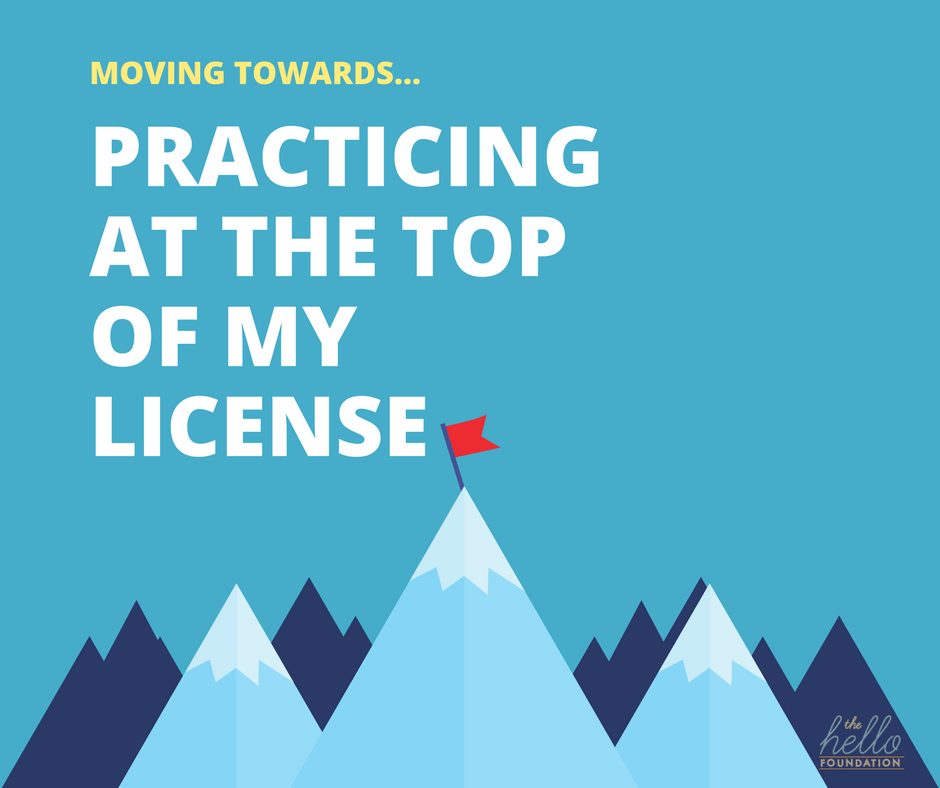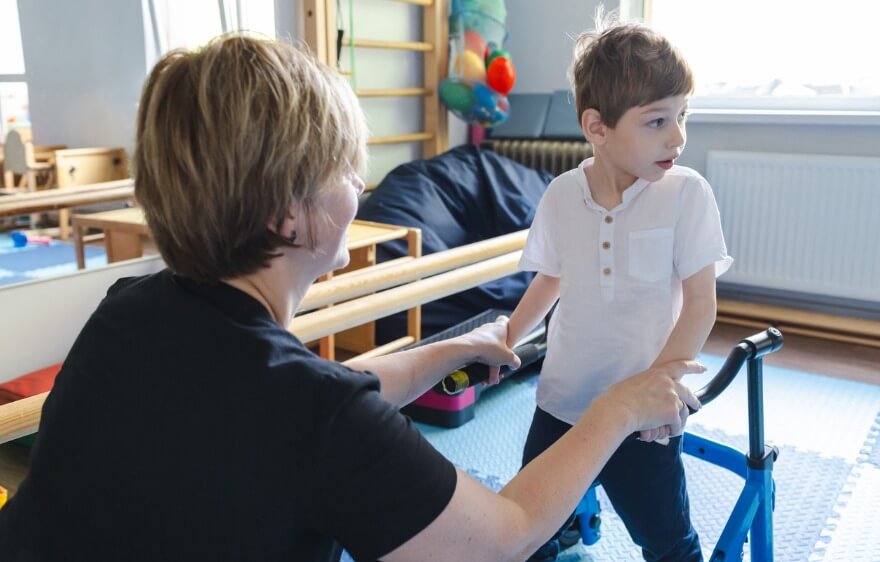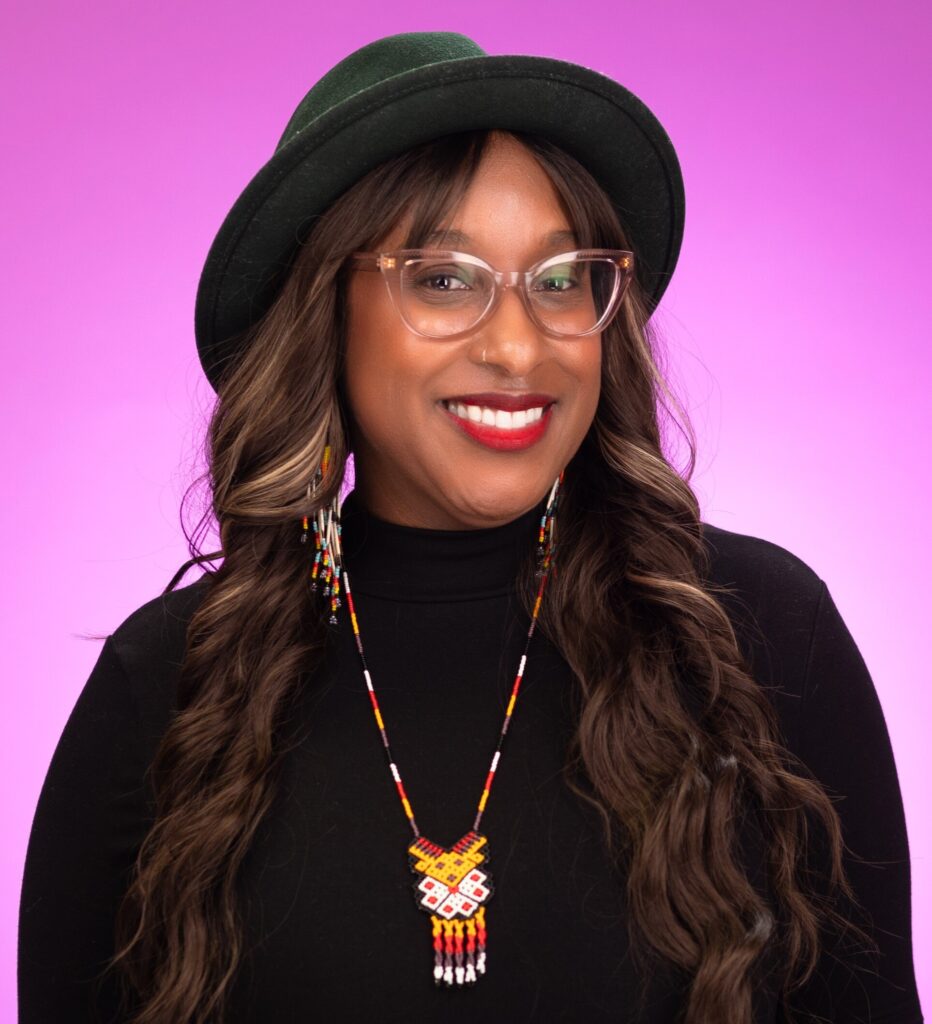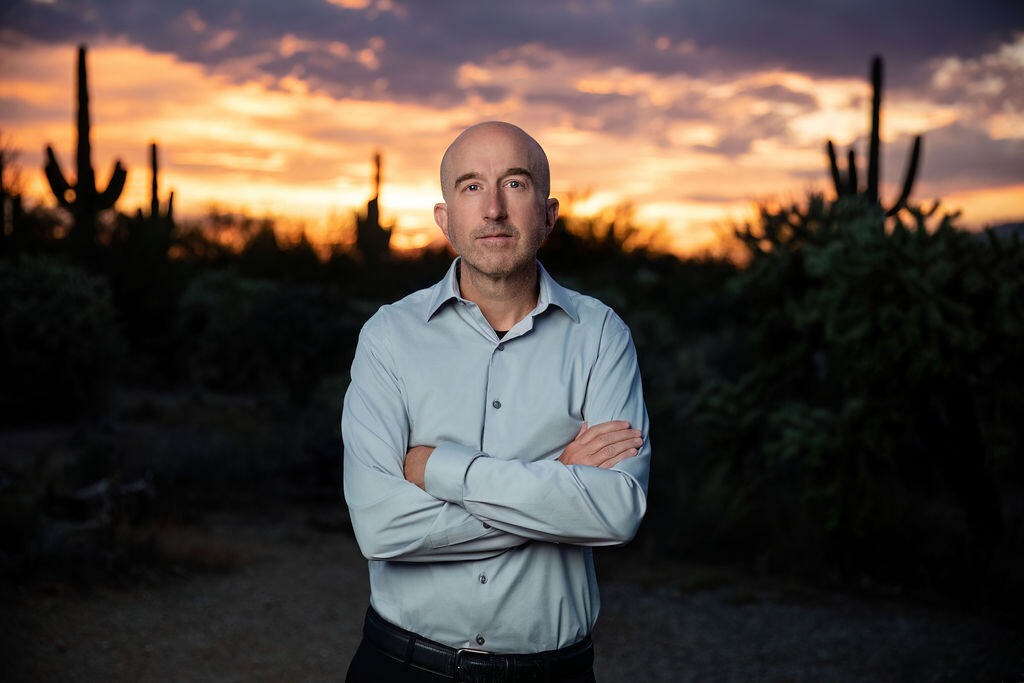The most rewarding and most challenging part of my work as a school-based SLP is my role as a member of many different teams. I work collaboratively with my SLPA, paraprofessionals, multiple special educators, teachers, principals, parents, not to mention occupational therapists, autism specialists, physical therapists, assistive technology specialists… you get the picture. I love working on teams like this because we all come to the table with unique skills and perspectives. Our task then is to piece together our offerings to create a complete program that works for a given student – providing exactly enough support today, while working towards where the student will be tomorrow. No single team member completes the program on their own. A special education eligibility requires a team to provide both the general education input, as well as specially designed instruction.
The January and February 2018 issues of the ASHA Leader both contained articles referencing “practicing at the top of our license.” This wording dates back to a 2013 ASHA report on reframing the professions, and even before that to a 2012 convention presentation, but the Leader articles have hit me at a time when the idea seems especially salient.
Ruminating on the idea of “practicing at the top of my license” over the last couple of weeks has suddenly brought some of the tougher decisions and discussions into focus. When I practice at the very top of my license, it forces teamwork and efficiency. Working from this wrap-around perspective creates an environment where everyone brings their best, relies on each other, and holds the team accountable. Here are a couple of recent examples:
- A second-grade student mainstreamed in a regular classroom with a speech-generating device
- A high school student with resource room support and language goals
- A recent team discussion about how (and whether) to document ‘SLP consult’ on an IEP
According to Dr. Lemmietta McNeilly, author of one of the Leader articles, practicing at the top of the license involves “delegating responsibilities that do not require professional interpretation and judgment.” For the 2nd grader above, this may mean spending the bulk of my service time teaching others to use the speech-generating device and helping them develop activities that support the functional communication she’s practicing with her device.
Practicing at the top of the license is “demonstrating and articulating our own unique knowledge and skills (value) and how we can contribute to teams.” That may mean my reviewing classroom assignments and general education expectations for the high school student in order to “pull out the language objectives“. I would use this information to write his IEP goals, but also explain his disability to his core teachers.
Practicing at the top of the license means “enhancing supervision and management skills.” This means taking the initiative to teach educational assistants or even other teachers the techniques I use for scaffolding assignments or the cues I use to support clear speech sounds. And it absolutely means documenting on the IEP the time I spend consulting with team members.
It can be scary and uncomfortable to change my role, to give some tasks away, to teach others the things that I have been sole proprietor over. But it is probably in my best interest. And it is certainly in the best interests of students. Instead of a 20-30 minute session, my students stand to be surrounded by multiple adults, throughout the day, all equipped to support their communication goals. I can’t imagine a better outcome.






